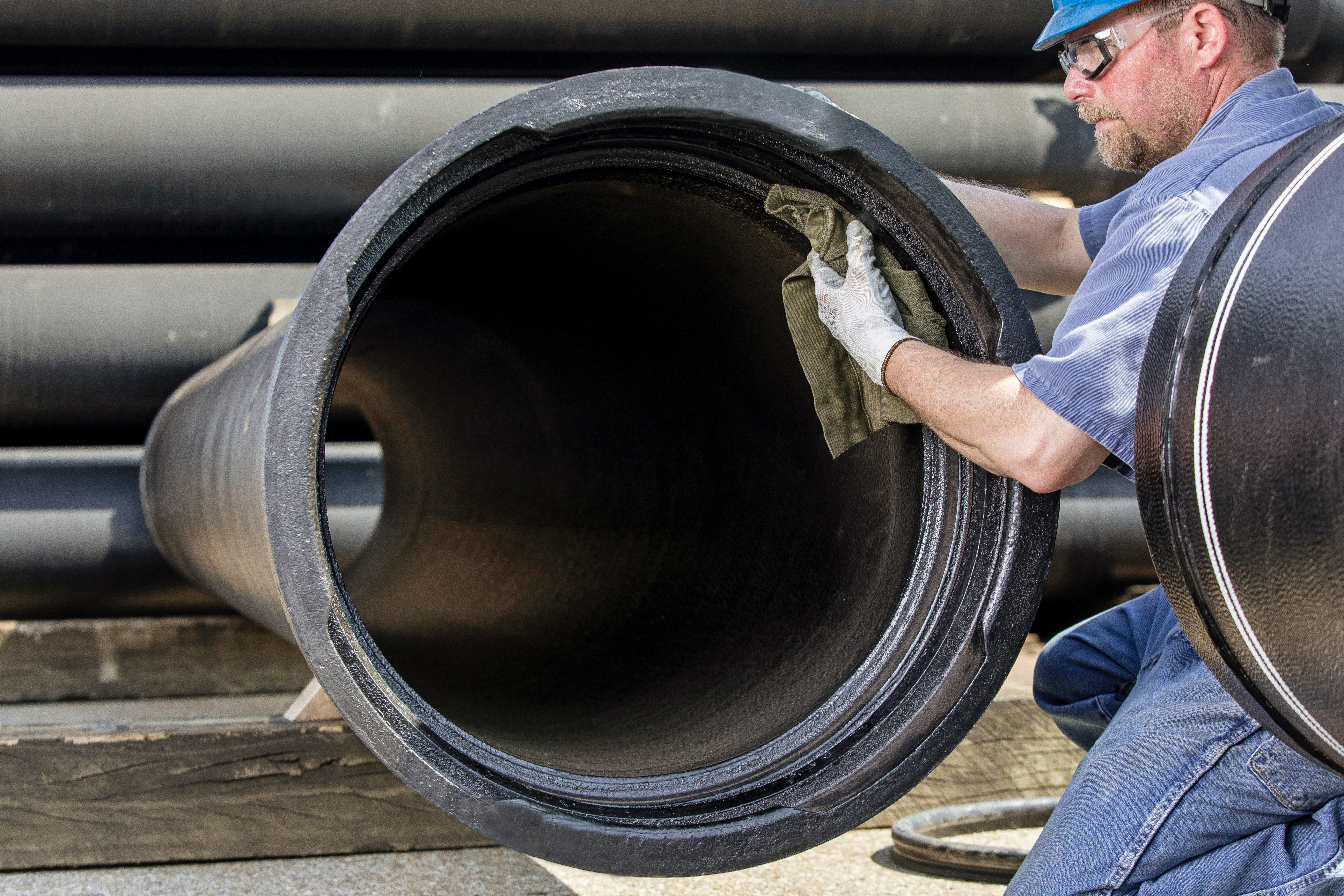The Importance of Ductility for Seismic Conditions
Ductile iron pipe has the inherent strength to withstand the kind of incredible stress that natural disasters, such as earthquakes, can place on an infrastructure. Much of the storied success of Ductile iron pipelines was achieved using standard designs, its strength and durability providing a primary defense. Today, with awareness of the potential for seismic loadings growing and the need to keep pipelines in service during those events, additional features such as restrained joints, expansion couplings, and polyethylene encasement become a part of a properly designed Ductile iron pipeline.
Restrained Joints
Resilience can have many meanings in a pipeline’s history. So often, we ask pipelines to do things that couldn’t have been imagined at the time they were designed and installed.
Special restrained joints for Ductile iron pipe have been used for years. These joints maintain deflection, with the added benefit of preventing joint separation. Where large deformations are anticipated, the “ball and socket” restrained joint provides up to 15 degrees deflection and can be used in combination with expansion sleeves.
DIPRA member companies have also developed special joints that can facilitate the design and use of Ductile iron pipe in seismic areas. These seismic joints offer greater deflection and expansion/contraction capabilities when compared to conventional restrained joints.
Push-On Joints
The flexibility of Ductile iron pipe’s push-on joints is useful under seismic events, allowing some lateral movement. Earthquakes also introduce forces that try to elongate or compress a pipeline along its length, which can be addressed using restrained joints and specialized couplings.


